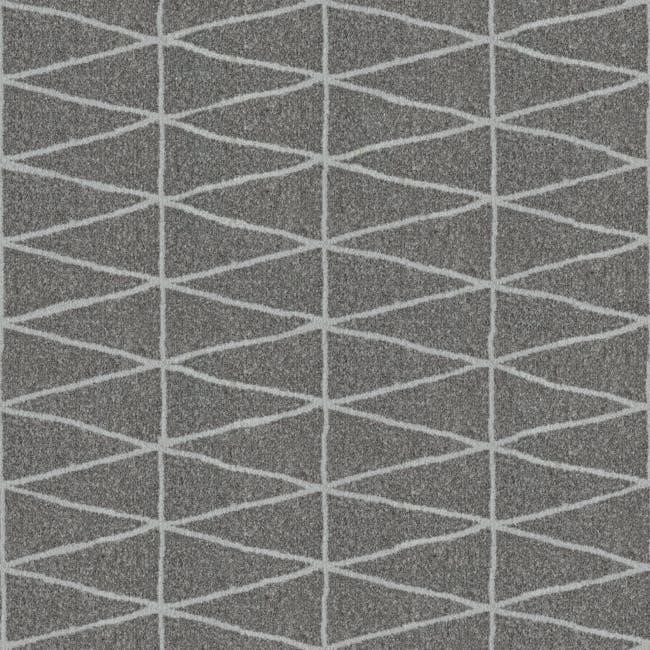Explore the concepts of parallel and perpendicular lines with our comprehensive worksheet! This resource provides practice problems, examples, and answer keys in PDF format․ Master identifying lines, finding equations, and applying these concepts in real-world scenarios․
Understanding Parallel Lines

Parallel lines, a fundamental concept in geometry, are lines that extend infinitely in the same plane without ever intersecting․ A key characteristic of parallel lines is that they maintain a constant distance from each other․ This consistent separation ensures they never meet, regardless of how far they are extended․
In mathematical terms, parallel lines possess the same slope․ The slope, often denoted as ‘m’ in the equation y = mx + c, represents the steepness and direction of a line․ When two lines share the same slope, it signifies that they are ascending or descending at the same rate, thus preventing any intersection․

Visually, parallel lines can be easily identified on a graph․ They appear as two distinct lines running alongside each other, maintaining a consistent gap․ Understanding the properties of parallel lines is crucial for various mathematical applications, including solving geometric problems, constructing accurate diagrams, and analyzing spatial relationships․

Properties of Parallel Lines
Parallel lines exhibit several distinct properties that define their behavior and relationships with other geometric elements․ Primarily, as previously mentioned, they possess the same slope․ This shared slope is the cornerstone of their parallelism, ensuring they never converge or diverge․
When a transversal, a line that intersects two or more lines, crosses parallel lines, specific angle relationships emerge․ Corresponding angles, which occupy the same relative position at each intersection, are congruent, meaning they have equal measures․ Similarly, alternate interior angles, located on opposite sides of the transversal and between the parallel lines, are also congruent․
Furthermore, consecutive interior angles, found on the same side of the transversal and between the parallel lines, are supplementary, summing up to 180 degrees․ These angle relationships provide valuable tools for solving geometric problems involving parallel lines․ Additionally, the distance between two parallel lines remains constant throughout their extent, reinforcing their non-intersecting nature․ Understanding these properties is essential for mastering geometric concepts and tackling related exercises․
Understanding Perpendicular Lines
Perpendicular lines are defined as lines that intersect at a right angle (90 degrees)․ This intersection creates a fundamental geometric relationship crucial in various mathematical and real-world applications․ Unlike parallel lines, which never meet, perpendicular lines form a sharp, precise angle at their point of intersection․
The concept of perpendicularity extends beyond simple lines․ Line segments, rays, and even planes can be perpendicular to each other, provided they meet at a right angle․ This relationship is visually represented by a small square symbol placed at the intersection point, clearly indicating the 90-degree angle․
Understanding perpendicular lines is essential for constructing geometric shapes, calculating areas and volumes, and solving problems involving angles and distances․ Their unique properties make them invaluable in fields like architecture, engineering, and computer graphics․ By grasping the definition and characteristics of perpendicular lines, one can build a solid foundation for more advanced geometric concepts․ Recognizing perpendicular relationships in diagrams and real-world scenarios is a key skill in mathematical reasoning․
Properties of Perpendicular Lines
Perpendicular lines possess distinct properties that set them apart from other line relationships․ The most prominent property is that they intersect at a right angle, measuring exactly 90 degrees․ This right angle is fundamental to their definition and has significant implications in geometry and trigonometry․
Another crucial property involves their slopes․ If two non-vertical lines are perpendicular, the product of their slopes is always -1․ This means that one slope is the negative reciprocal of the other․ For example, if one line has a slope of 2, a perpendicular line will have a slope of -1/2․ This relationship provides a powerful tool for determining if two lines are perpendicular based on their equations․
Furthermore, perpendicular lines create four right angles at their intersection point․ These right angles are congruent, meaning they have the same measure․ This property is useful in geometric proofs and constructions․ Understanding these properties is essential for solving problems related to perpendicularity and applying the concept in various mathematical contexts․ From calculating distances to determining angles, the properties of perpendicular lines are indispensable in geometry and beyond․
Finding the Equation of a Parallel Line
To determine the equation of a line parallel to a given line, we leverage the property that parallel lines share the same slope․ The process typically involves knowing the equation of the original line and a point through which the parallel line must pass․
First, identify the slope of the given line․ This can be easily found if the equation is in slope-intercept form (y = mx + b), where ‘m’ represents the slope․ Once you have the slope, use it as the slope for the new, parallel line․
Next, use the point-slope form of a linear equation, which is y ⎯ y1 = m(x ⎯ x1), where (x1, y1) is the given point․ Substitute the slope you found and the coordinates of the point into this equation․ Simplify the equation to obtain the slope-intercept form (y = mx + c) or the standard form (Ax + By = C), depending on the desired format․
This method ensures that the new line has the same steepness as the original line, guaranteeing that they are parallel․ Practice with various examples to solidify your understanding of this process․ Mastering this technique is crucial for solving a wide range of geometry and algebra problems;
Finding the Equation of a Perpendicular Line
To find the equation of a line perpendicular to a given line, we utilize the principle that perpendicular lines have slopes that are negative reciprocals of each other․ This means if one line has a slope ‘m’, the perpendicular line has a slope of ‘-1/m’․ Knowing this relationship is essential․
Start by identifying the slope of the original line․ If the equation is in slope-intercept form (y = mx + b), the slope is readily available․ Take the negative reciprocal of this slope to find the slope of the perpendicular line․
Next, use the point-slope form of a linear equation: y ー y1 = m(x ー x1), where (x1, y1) is a point through which the perpendicular line passes․ Substitute the new slope (the negative reciprocal) and the coordinates of the given point into this equation․
Simplify the equation to get it into the desired form, such as slope-intercept form (y = mx + c) or standard form (Ax + By = C)․ This resulting equation represents a line that is perpendicular to the original line and passes through the specified point․ Practice with different examples to enhance your proficiency in this skill․

Examples of Parallel and Perpendicular Line Equations
Let’s explore some examples to illustrate parallel and perpendicular line equations․ Consider the line y = 2x + 3․ A parallel line would have the same slope, such as y = 2x ⎯ 1․ Notice the slopes are identical (m=2), while the y-intercepts differ, ensuring the lines never intersect․

Now, let’s find a perpendicular line․ The slope of the perpendicular line is the negative reciprocal of 2, which is -1/2․ Therefore, a perpendicular line could be y = -1/2x + 5․ The product of the slopes (2 * -1/2) equals -1, confirming perpendicularity․
Consider another example: y = -3x + 4․ A parallel line might be y = -3x + 7, maintaining the same slope․ A perpendicular line would have a slope of 1/3, such as y = 1/3x ⎯ 2․ Again, the slopes confirm the relationship․
These examples demonstrate how to manipulate equations to create parallel and perpendicular lines․ Practice with varied equations to strengthen your understanding․ Remember, parallel lines share slopes, and perpendicular lines have slopes that are negative reciprocals of each other․ Mastering these concepts is essential for solving related problems․
Slope-Intercept Form of Equations
The slope-intercept form is a fundamental way to represent linear equations: y = mx + b․ Here, ‘m’ represents the slope of the line, indicating its steepness and direction, while ‘b’ represents the y-intercept, the point where the line crosses the y-axis․ This form provides direct insight into a line’s characteristics․
Understanding the slope-intercept form is crucial for determining if lines are parallel or perpendicular․ Parallel lines have the same ‘m’ value (slope) but different ‘b’ values (y-intercepts)․ For example, y = 3x + 2 and y = 3x ⎯ 1 are parallel because they both have a slope of 3․

Perpendicular lines have slopes that are negative reciprocals of each other․ If one line has a slope of ‘m’, a line perpendicular to it will have a slope of ‘-1/m’․ For example, if a line is y = 2x + 5, a perpendicular line would be y = -1/2x + 1․
By manipulating equations into slope-intercept form, you can quickly identify slopes and y-intercepts, making it easier to analyze the relationships between lines․ This form is essential for graphing, comparing, and solving problems involving parallel and perpendicular lines․ Practice converting equations into this form to strengthen your skills․
Using Slope to Determine Parallelism and Perpendicularity
The slope, often denoted as ‘m’, is the cornerstone for determining whether two lines are parallel or perpendicular․ Parallel lines, by definition, never intersect and maintain a constant distance from each other․ Mathematically, this translates to having identical slopes․ If two lines have the same slope, they are parallel, regardless of their y-intercepts․
Perpendicular lines, on the other hand, intersect at a right angle (90 degrees)․ The relationship between their slopes is that they are negative reciprocals of each other․ This means that if one line has a slope of ‘m’, the slope of a line perpendicular to it is ‘-1/m’․
To determine if lines are parallel, compare their slopes․ If the slopes are equal, the lines are parallel․ To determine if lines are perpendicular, multiply their slopes․ If the product is -1, the lines are perpendicular․ If neither condition is met, the lines are neither parallel nor perpendicular․
Understanding this relationship allows you to quickly assess the orientation of lines based solely on their slopes․ This is a fundamental concept in coordinate geometry and is essential for solving a wide range of problems․ Practice identifying slopes to master this skill․
Worksheet Exercises: Identifying Parallel and Perpendicular Lines
This section of the worksheet is designed to solidify your understanding of parallel and perpendicular lines through practical exercises․ You will be presented with various sets of linear equations or graphical representations of lines․ Your task is to analyze these lines and determine whether they are parallel, perpendicular, or neither․
For each set of lines, carefully examine their slopes․ Remember that parallel lines have equal slopes, while perpendicular lines have slopes that are negative reciprocals of each other․ Pay close attention to the signs and values of the slopes to avoid errors․
Some exercises may require you to rewrite equations in slope-intercept form (y = mx + b) to easily identify the slope․ Other exercises may involve analyzing graphs to visually estimate and compare slopes․

Be sure to justify your answers by providing a clear explanation of your reasoning․ State the slopes of the lines and explain how they relate to each other (e․g․, “Line 1 has a slope of 2, and Line 2 has a slope of -1/2․ Therefore, the lines are perpendicular because their slopes are negative reciprocals․”)․ This will help reinforce your understanding of the underlying concepts․

Worksheet Exercises: Writing Equations of Parallel and Perpendicular Lines
This section focuses on applying your knowledge of parallel and perpendicular lines to write linear equations․ You’ll be given a line (either in equation form or defined by points) and a point through which the new line must pass․ Your task is to determine the equation of a line that satisfies the given conditions․
To solve these problems, first identify the slope of the given line․ If you need to write a parallel line, use the same slope․ If you need to write a perpendicular line, find the negative reciprocal of the given slope․
Next, use the point-slope form of a linear equation (y ⎯ y1 = m(x ー x1)) to create the equation of the new line․ Substitute the slope you found and the coordinates of the given point into the formula․ Finally, simplify the equation and rewrite it in slope-intercept form (y = mx + b) for clarity․
Practice problems will vary in difficulty, some involving fractions or negative numbers․ Pay careful attention to arithmetic and algebraic manipulation to ensure accuracy․ Remember to double-check your work by verifying that the new line passes through the given point and has the correct relationship (parallel or perpendicular) to the original line․
Real-World Applications of Parallel and Perpendicular Lines
Parallel and perpendicular lines aren’t just abstract mathematical concepts; they’re fundamental to how we understand and interact with the world around us․ From architecture to engineering, these geometric relationships provide structure, stability, and functionality․
Think about buildings: walls are typically parallel to each other, providing stability and maximizing usable space․ Floors and ceilings are also parallel, ensuring a level and consistent environment․ Perpendicular lines are crucial for creating right angles, which are essential for structural integrity in corners and joints․
In urban planning, streets often follow a grid pattern, with parallel avenues and perpendicular cross streets․ This design facilitates navigation and efficient traffic flow․ Bridges and overpasses rely heavily on parallel and perpendicular lines for their design and construction, ensuring stability and safety;
Even in art and design, these lines play a significant role․ Artists use parallel lines to create perspective and depth, while perpendicular lines can add balance and structure to a composition․ Understanding these geometric relationships enhances our appreciation for the design principles underlying our physical environment․ Furthermore, consider navigation systems, which use coordinate systems based on perpendicular axes to pinpoint locations accurately․
Answer Keys and Solutions for Practice Problems
To facilitate effective learning and mastery of parallel and perpendicular line concepts, comprehensive answer keys and detailed solutions are provided for all practice problems․ These resources are designed to not only verify your answers but also to guide you through the problem-solving process․

Each solution demonstrates the step-by-step application of relevant formulas and theorems, ensuring a clear understanding of the underlying principles․ Whether you’re struggling with identifying parallel or perpendicular lines from given equations, finding the equation of a line that meets specific criteria, or applying these concepts in geometric proofs, the solutions offer valuable insights․
The answer keys provide quick verification of your work, allowing you to promptly identify areas where you may need further practice․ The detailed solutions, on the other hand, offer a deeper understanding of the problem-solving strategies and techniques involved․ By studying these solutions, you can develop your critical thinking skills and enhance your ability to tackle similar problems in the future․
Furthermore, the solutions often include alternative approaches and explanations, catering to diverse learning styles and preferences․ This ensures that every learner can find a method that resonates with them and promotes a more comprehensive understanding of the material․ With these resources at your disposal, you can confidently practice and master the concepts of parallel and perpendicular lines․










